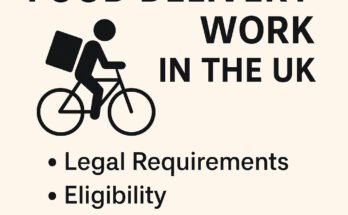Wondering how to apply for UK schools? Choosing and registering your child in the right school is a big decision. Whether you’re a UK resident or relocating from abroad, this guide will walk you through the UK school registration process in a clear, practical, and reassuring way. From understanding the school system to dealing with catchment areas and appeals, here’s everything you need to know to get your child settled in the best school for them.
1. Understanding the UK School System
Before registering your child, it’s essential to understand how the UK education system is structured. Schools are broadly divided into state schools, which are government-funded and free to attend, and private (or independent) schools, which charge tuition fees. State schools include community schools, academies, faith schools, and grammar schools. Children typically attend primary school from ages 4 to 11, progressing from Reception to Year 6, and then move on to secondary school from ages 11 to 16, covering Year 7 to Year 11. After this, they may attend sixth form or college for Years 12 and 13.
Catchment areas play a significant role in admissions. These are the geographical zones around a school that often influence your child’s priority for admission. While living near a school may increase your chances of getting a place, it’s not a guarantee. Always check your local council’s admissions website for accurate information about catchment areas and nearby schools.
2. When to Apply for UK Schools
Timing is crucial. For Reception (first year of primary school), applications open in September of the year before your child turns five and close in mid-January. Offers are sent out in mid-April. For secondary schools (Year 7), the application window begins in early September of Year 6 and closes on 31 October, with offers released on 1 March. If you’re applying for an in-year transfer, such as due to a move, you can apply at any time by contacting the local council or the school directly. Applying early and setting reminders for deadlines is strongly advised.
3. Required Documents for UK School Applications
You’ll need to provide specific documents during the application process. These typically include proof of address (such as a council tax bill or tenancy agreement), your child’s birth certificate, proof of parental responsibility (if necessary), passport or visa details if you’re not a UK national, and any relevant medical or special educational needs (SEN) documentation. Preparing copies of these documents in advance can help streamline the process.
4. How to Apply for UK State and Private Schools
For state schools, begin by visiting your local council’s website and accessing the admissions portal. You’ll need to register, complete the online application form by listing up to six preferred schools in order of preference, upload the required documents, and submit everything before the deadline. You’ll receive your child’s school offer on the national offer day.
For private schools, the process is different. You need to contact the school directly or apply through their website. This usually involves registering your child (often with a fee), attending open days or interviews, submitting documents and references, and sometimes completing entrance exams. Each school sets its own timeline, so be sure to check deadlines individually.
5. Choosing Schools and Understanding Catchment Areas in the UK
Choosing the right school involves attending open days, reviewing Ofsted reports, and considering factors like the school’s ethos, curriculum, extracurricular activities, facilities, and SEN provision. Catchment areas influence admission priority, particularly for oversubscribed schools, though not all schools follow strict catchment policies. Check each school’s admissions criteria carefully. To increase your chances of securing a place, include a mix of aspirational and realistic choices, keep your address updated, and consider moving within a desired catchment before applying.
6. Waiting Lists & Appeals in UK School Admissions
If your child doesn’t get into a preferred school, they’ll automatically be added to the waiting lists of higher-ranked schools. You can still accept the place you’re offered while remaining on waiting lists. If you wish to appeal a decision, start by checking the deadline, which is typically within 20 school days of the offer. Submit an appeal to the local authority or school, attend a hearing, and present your case. Supporting documents, such as medical letters or academic records, can strengthen your appeal.
7. Special Circumstances for School Registration in the UK
For international families, it’s important that your child is a UK resident or has a visa that permits study. Try to apply before relocating, and include passport and visa details. If your child has special educational needs, you may need an Education, Health and Care Plan (EHCP), in which case the local authority will help place your child in a suitable school. Families relocating within the UK should notify both their current and future councils, use the in-year admissions route, and provide proof of their new address. Renting within your target catchment area can improve your chances.
FAQs: How to Apply for UK Schools
Can I apply to schools outside my catchment area? Yes, though admission depends on criteria such as distance and availability, and you’re not guaranteed a place.
What if I miss the deadline? You can still apply, but late applications are processed after all on-time submissions.
Can I apply to both state and private schools? Yes, but they follow separate application procedures.
How do I know which council I fall under? Enter your postcode on the GOV.UK website to find your local authority.
Are grammar schools part of the normal admissions process? Some are, but many require entrance exams (11+), so check individual school websites.
Registering your child for school in the UK might seem overwhelming, but with the right preparation and information, the process becomes much more manageable. Remember to apply early, keep your documents ready, visit schools if possible, and don’t hesitate to ask questions. For more help, check your local council’s school admissions page or contact the school admissions team directly. You’ve got this!
Read more here




